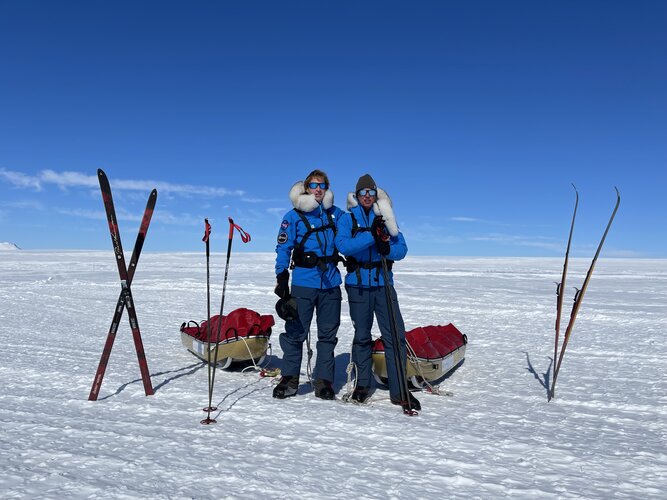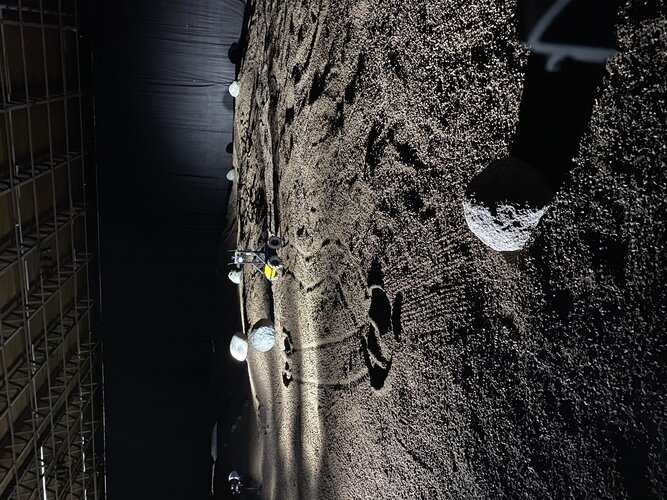
Copernical Team
NASA to launch 4 Earth Science Missions in 2022
 NASA will launch four Earth science missions in 2022 to provide scientists with more information about fundamental climate systems and processes including extreme storms, surface water and oceans, and atmospheric dust. Scientists will discuss the upcoming missions at the American Geophysical Union's (AGU) 2021 Fall Meeting, hosted in New Orleans between Dec. 13 and 17.
NASA has a unique vi
NASA will launch four Earth science missions in 2022 to provide scientists with more information about fundamental climate systems and processes including extreme storms, surface water and oceans, and atmospheric dust. Scientists will discuss the upcoming missions at the American Geophysical Union's (AGU) 2021 Fall Meeting, hosted in New Orleans between Dec. 13 and 17.
NASA has a unique vi BlackSky achieves highest revisit, dawn-to-dusk satellite coverage
 BlackSky's high-resolution small satellite constellation has the highest revisit rate in the world, with a peak of 15 hourly visits per day over certain locations. The real-time geospatial intelligence company achieved a 12 small satellite constellation, doubling its imaging capacity, following Wednesday's successful Rocket Lab mission.
In less than 30 days the company launched six satelli
BlackSky's high-resolution small satellite constellation has the highest revisit rate in the world, with a peak of 15 hourly visits per day over certain locations. The real-time geospatial intelligence company achieved a 12 small satellite constellation, doubling its imaging capacity, following Wednesday's successful Rocket Lab mission.
In less than 30 days the company launched six satelli MDA announces Chorus as new commercial EO mission
 MDA Ltd. has announced at the World Satellite Business Week event that its next generation commercial Earth observation (EO) mission will be named CHORUS. The company also announced that CHORUS will initially include C-band and X-band Synthetic Aperture Radar (SAR) satellites.
A collaborative multi-sensor constellation, CHORUS will bring together multiple diverse and unique perspectives in
MDA Ltd. has announced at the World Satellite Business Week event that its next generation commercial Earth observation (EO) mission will be named CHORUS. The company also announced that CHORUS will initially include C-band and X-band Synthetic Aperture Radar (SAR) satellites.
A collaborative multi-sensor constellation, CHORUS will bring together multiple diverse and unique perspectives in Kitesurfing the white wilderness for science

In an astonishing feat of endurance, explorers Justin Packshaw and Jamie Facer Childs are a quarter of the way through a 3600-km kitesurf trek that takes them across the desolate heart of Antarctica. They are not pushing their physical and mental limits to the brink, facing howling gales and temperatures of –55°C just for the sake of adventure. They are gathering information to help scientists better understand how the body responds to extremes and taking unique measurements of their ice environment that will help complement ESA’s CryoSat mission to better understand how this giant ice
Lunar robot wars
 Image:
Lunar robot wars
Image:
Lunar robot wars NASA-NOAA tech will aid marine oil spill response
 Just off the coast of Santa Barbara, California, thousands of gallons of oil seep through cracks in the seafloor and rise to the surface each day. But this isn't a disaster zone: It's one of the largest naturally occurring oil seeps in the world and is believed to have been active for thousands of years.
The reliability of these seeps makes the area an important natural laboratory for scie
Just off the coast of Santa Barbara, California, thousands of gallons of oil seep through cracks in the seafloor and rise to the surface each day. But this isn't a disaster zone: It's one of the largest naturally occurring oil seeps in the world and is believed to have been active for thousands of years.
The reliability of these seeps makes the area an important natural laboratory for scie NASA's Parker Space Probe becomes 1st spacecraft to 'touch' the sun
 Three years after it was launched, NASA's Parker Solar Probe has become the first spacecraft in history to "touch" the sun, officials said.
NASA said the probe flew through the sun's upper atmosphere, the corona, and took some particle samples. The agency called it a "monumental" moment and a "giant leap for solar science."
Because it's closer to the sun than any man-made craft h
Three years after it was launched, NASA's Parker Solar Probe has become the first spacecraft in history to "touch" the sun, officials said.
NASA said the probe flew through the sun's upper atmosphere, the corona, and took some particle samples. The agency called it a "monumental" moment and a "giant leap for solar science."
Because it's closer to the sun than any man-made craft h Discovery of split photon provides a new way to see light
 Nearly a century after Italian physicist Ettore Majorana laid the groundwork for the discovery that electrons could be divided into halves, researchers predict that split photons may also exist, according to a study from Dartmouth and SUNY Polytechnic Institute researchers.
The finding that the building blocks of light can exist in a previously-unimaginable split form advances the fundamen
Nearly a century after Italian physicist Ettore Majorana laid the groundwork for the discovery that electrons could be divided into halves, researchers predict that split photons may also exist, according to a study from Dartmouth and SUNY Polytechnic Institute researchers.
The finding that the building blocks of light can exist in a previously-unimaginable split form advances the fundamen Webb space telescope launch delayed: NASA
 The launch of the James Webb space telescope scheduled for December 22 won't take place before December 24, NASA announced on Wednesday.
The NASA project, launched in 1989, was originally expected to deploy in the early 2000s.
But multiple problems forced delays and a tripling of the telescope's original budget with a final price tag of nearly 10 billion dollars (8.8 billion euros).
The launch of the James Webb space telescope scheduled for December 22 won't take place before December 24, NASA announced on Wednesday.
The NASA project, launched in 1989, was originally expected to deploy in the early 2000s.
But multiple problems forced delays and a tripling of the telescope's original budget with a final price tag of nearly 10 billion dollars (8.8 billion euros). Life arose on hydrogen energy
 How did the first chemical reactions get started at the origin of life and what was their source of energy? Researchers at the Heinrich Heine University Dusseldorf (HHU) have reconstructed the metabolism of the last universal common ancestor, LUCA. They found that almost all chemical steps used by primordial life to piece together the molecular building blocks of cells are energy releasing react
How did the first chemical reactions get started at the origin of life and what was their source of energy? Researchers at the Heinrich Heine University Dusseldorf (HHU) have reconstructed the metabolism of the last universal common ancestor, LUCA. They found that almost all chemical steps used by primordial life to piece together the molecular building blocks of cells are energy releasing react 































